Effective ways to prevent and fight cold for livestock
(Baonghean.vn) - Abnormal weather, prolonged cold spells have caused great damage to livestock. To prevent cold and protect livestock in winter, farmers need to apply some of the following technical measures.
1. Preparation
Ccamp
For barns, repair and cover to avoid drafts. Ensure the barn floor is always clean and dry, regularly change the bedding, and limit water spillage on the barn floor.
When building a new barn, it should be in a high place, near a water source, within the regional planning; the barn door should face south or southwest to ensure light and ventilation; the barn roof should be 3m high, the barn walls should be 0.8 - 1.2m high, the floor should be 40 - 50cm higher than the ground, with a slope of 2 - 3%.
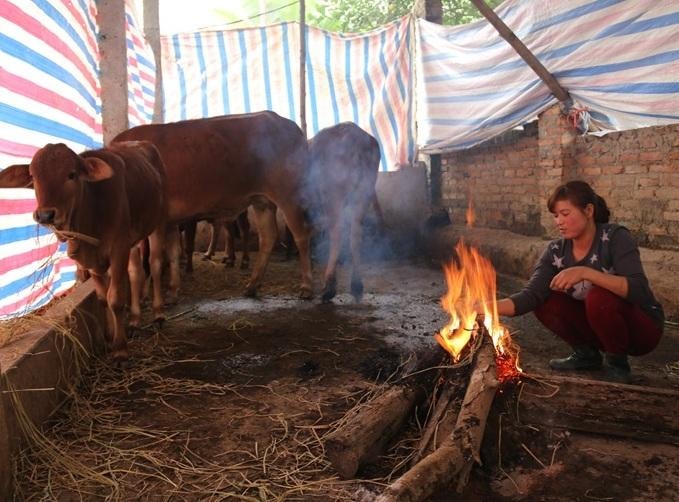 |
In the barn, there should be an air vent above for air circulation. When lighting a fire, the smoke will go out through the vent, not accumulating toxic gases in the barn that affect the cattle.
Food
Preparing food reserves is very important, because only when providing adequate food will buffaloes and cows have enough energy to fight the cold.
Apply measures to store and collect food in winter such as straw, sugarcane leaves, cassava residue, pineapple residue, banana trees mixed with bran, salt (2 - 3% salt) for cattle to eat; apply technical measures for processing such as: fermenting food, fermenting straw with urea,...
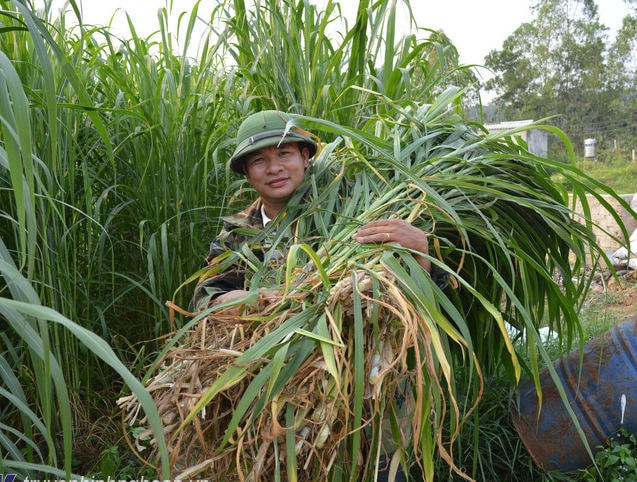 |
Starting in November, farmers need to prepare spare feed for buffaloes and cows to use in the next 4 months. For an adult buffalo or cow (weighing about 300 kg), it is necessary to prepare on average: 250 kg of concentrated feed (corn, bran, cassava flour, etc.) and 400 kg of roughage (straw, elephant grass, banana trees, cassava, silage, etc.), ensuring at least 1 - 2 kg of mixed bran/buffalo/cow during cold days.
If possible, supplement vitamins and minerals to improve health and disease resistance of livestock.
Cold-resistant materials
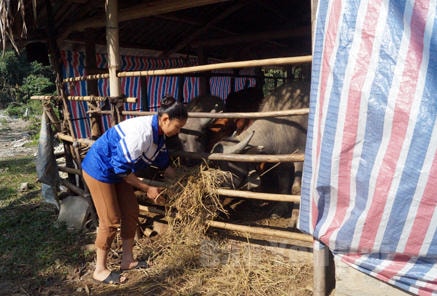 |
Cold-proof materials includeStraw, grass, banana leaves, dry corn husks for lining the barn floor; rice husks, firewood for heating; tarpaulins, plastic bags, bamboo fences to surround and cover the barn; blankets, shirts, and burlap sacks to make cold-proof coats. Old blankets, shirts, and burlap sacks should be used to make cold-proof coats for cattle and buffalo.
2. Veterinary hygiene and vaccination
Ensuring clean barns helps limit pathogens for cattle, especially when vaccinated well, it also helps cattle avoid some diseases that occur when the weather changes.
It is necessary to regularly clean and disinfect the barns, periodically spraying disinfectant 2-3 times/week to clean and disinfect.
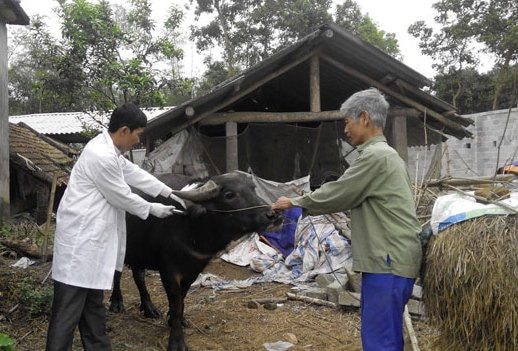 |
Carry out regular vaccination well; vaccinate against all diseases: foot and mouth disease in cattle, anthrax in cattle. Vaccinate cattle when they reach vaccination age and the number of cattle that are missed during regular vaccinations.
Check and promptly detect cattle showing signs of liver fluke and blood parasites for vaccination and treatment on warm, sunny days.
3. Measures to take when fighting the cold
- Livestock farmers need to regularly monitor weather forecasts to have effective plans to prevent and protect cattle from the cold. On windy days with temperatures below 15 degrees Celsius, it is best to keep cattle in the barn and not let them graze.
Using straw and hay as bedding in winter will significantly reduce the effects of cold weather on livestock.
On normal days, adult cattle should be fed about 25 - 30 kg of roughage and 1.5 kg of concentrate, divided into two meals. If it is a very cold day, the amount of concentrate should be increased by about 2 kg to supplement energy, helping cattle resist the cold.
Pay attention to feeding cattle roughage first, then concentrates and water so that cattle will eat more roughage.
When the temperature drops below 12 degrees Celsius, it is necessary to use the fire-fighting method and pay attention to the location. The fire tray should be placed at the end of the barn so that the smoke does not blow into the buffalo's face and placed away from bedding and tarpaulin to prevent fire.
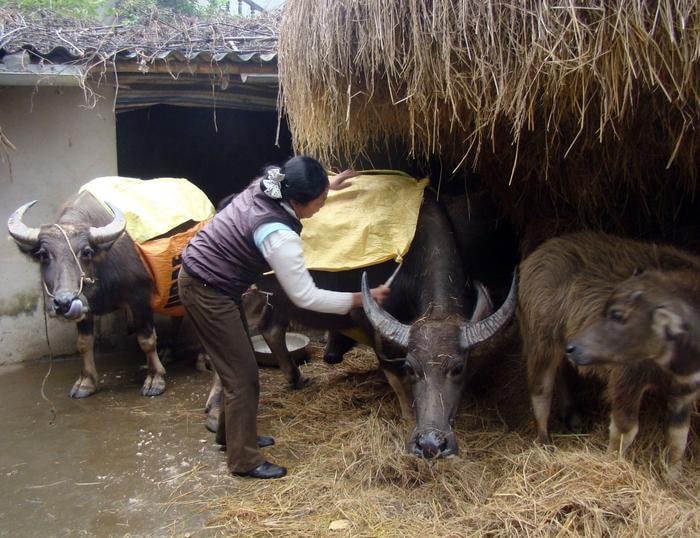 |
It is necessary to wear warm clothes for buffaloes and cows; pay attention to the length of the clothes covering from the body to the end of the tail, the width is just enough to cover the body, the straps are tied like buttons under the belly; buffaloes and cows should not wear warm clothes all day, when it is sunny (usually after 8am) the clothes should be removed so that buffaloes and cows can enjoy the warm sun.
In the work of preventing cold for cattle, the more proactive the breeder, the higher the efficiency will be.
Note During cold days, cattle often get chilblains, which is characterized by swollen, cracked skin and congestion. In severe cases, the epidermis on the legs will ooze yellow fluid, creating ulcers and causing infection. If not treated promptly, the subcutaneous tissue will become necrotic, causing the animal to become lame. In more severe cases, other infectious diseases may develop. When cattle have frostbite, it is important to keep them warm, keep the barn floor dry, and give them adequate food and water with added salt, minerals, and vitamins. For newly appeared diseases, you can use crushed ginger mixed with wine for massage; at the same time, let the buffaloes and cows exercise in the barn to increase blood circulation in the legs, avoiding swelling that makes the disease worse. |
Ngoc Anh
(Synthetic)
| RELATED NEWS |
|---|
